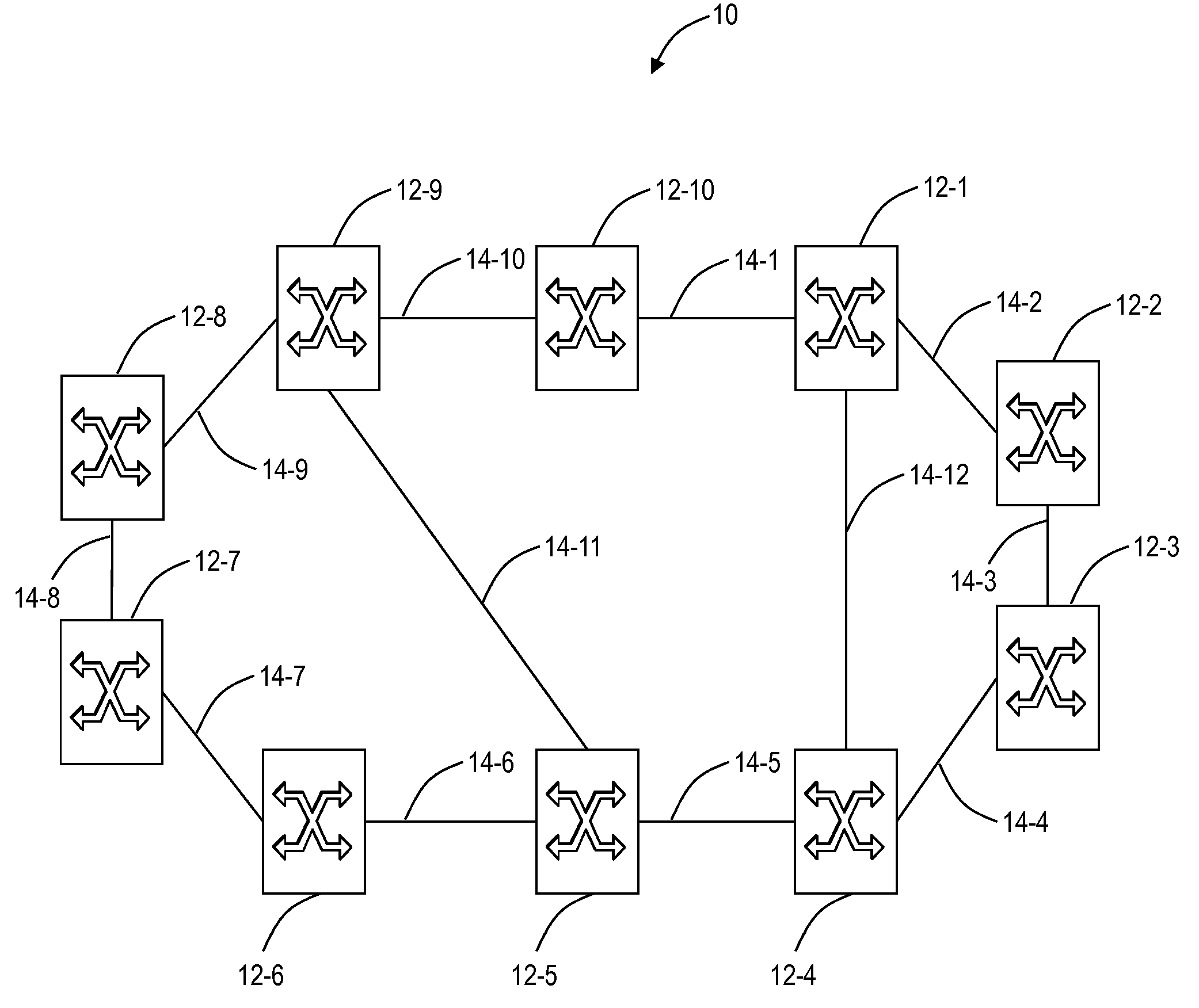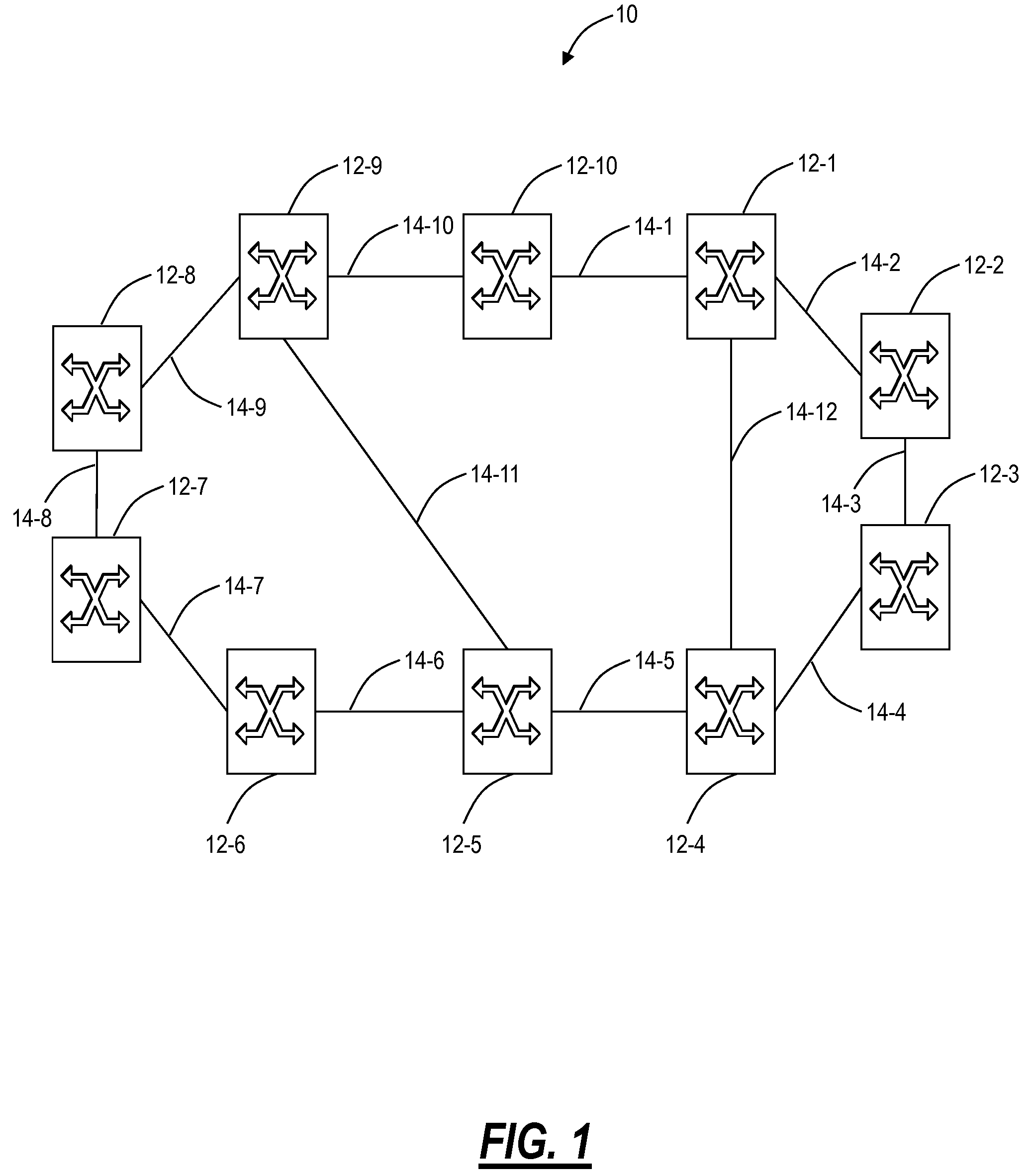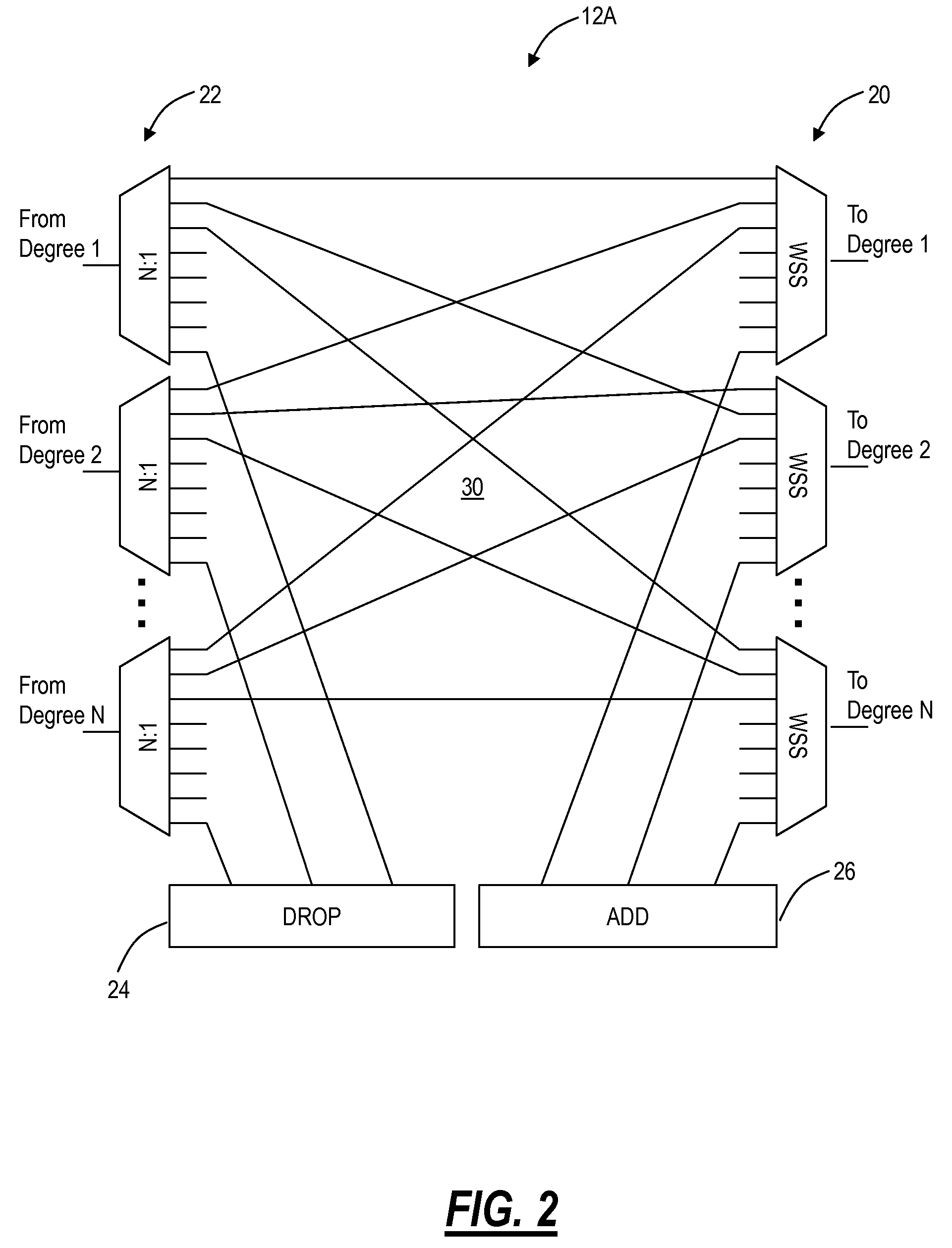Photonic routing systems and methods for loop avoidance
a photonic routing and loop avoidance technology, applied in the field of optical network systems and methods, can solve the problems of impairment effects, signal loss, etc., and the routing of individual optical channels can be an extremely complex proposition, and the routing considerations of individual optical channels are becoming less applicabl
- Summary
- Abstract
- Description
- Claims
- Application Information
AI Technical Summary
Benefits of technology
Problems solved by technology
Method used
Image
Examples
Embodiment Construction
[0019]In various exemplary embodiments, routing systems and methods in optical networks such as, for example, broadcast and select optical networks, all-broadcast optical networks, etc., are described which use loop avoidance techniques to find loop-free paths through the network for one or more wavelengths. Using the routing systems and methods, wavelengths or groups of wavelengths are routed in a single path a network. This single path can be determined by computing a loop free forwarding path through the network. In particular, the routing systems and methods can utilize various Layer 2 and Layer 3 constructs in the photonic domain to quickly and efficient compute loop free paths on a per wavelength or per group of wavelength basis through networks. These loop free paths can be computed in response to failures thereby providing a quick and efficient restoration mechanism in the photonic domain. Stated differently, the routing systems and methods approach routing / path selection in...
PUM
 Login to View More
Login to View More Abstract
Description
Claims
Application Information
 Login to View More
Login to View More - R&D
- Intellectual Property
- Life Sciences
- Materials
- Tech Scout
- Unparalleled Data Quality
- Higher Quality Content
- 60% Fewer Hallucinations
Browse by: Latest US Patents, China's latest patents, Technical Efficacy Thesaurus, Application Domain, Technology Topic, Popular Technical Reports.
© 2025 PatSnap. All rights reserved.Legal|Privacy policy|Modern Slavery Act Transparency Statement|Sitemap|About US| Contact US: help@patsnap.com



